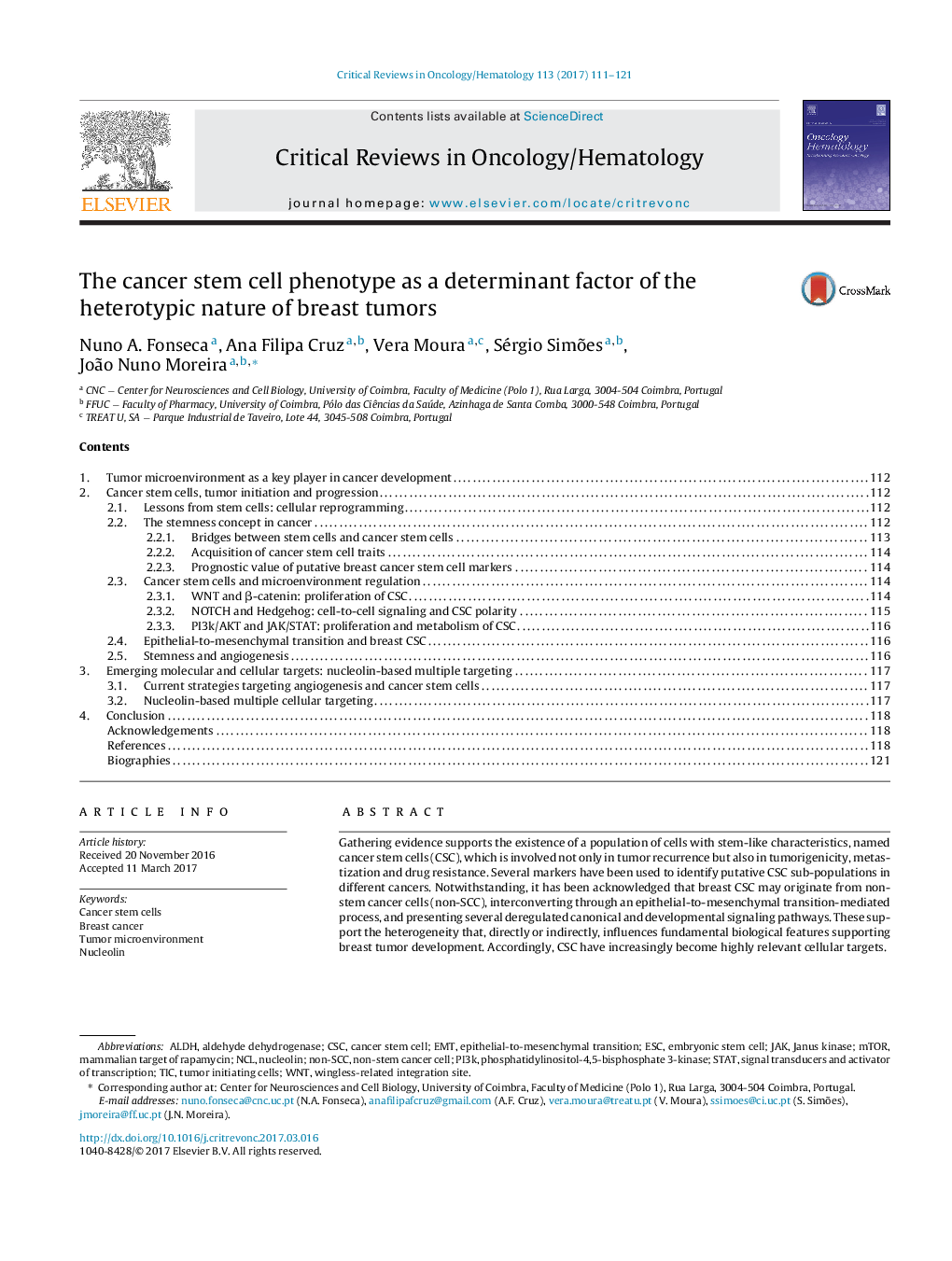| Article ID | Journal | Published Year | Pages | File Type |
|---|---|---|---|---|
| 5664081 | Critical Reviews in Oncology/Hematology | 2017 | 11 Pages |
â¢CSC are involved in tumorigenesis and recurrence in breast cancer.â¢Canonical and developmental pathways are involved in CSC regulation.â¢CSC and non-stem cancer cells exist in the tumor in a dynamic equilibrium.â¢Overlapped nucleolin overexpression in breast CSC and non-stem breast cancer cells.
Gathering evidence supports the existence of a population of cells with stem-like characteristics, named cancer stem cells (CSC), which is involved not only in tumor recurrence but also in tumorigenicity, metastization and drug resistance. Several markers have been used to identify putative CSC sub-populations in different cancers. Notwithstanding, it has been acknowledged that breast CSC may originate from non-stem cancer cells (non-SCC), interconverting through an epithelial-to-mesenchymal transition-mediated process, and presenting several deregulated canonical and developmental signaling pathways. These support the heterogeneity that, directly or indirectly, influences fundamental biological features supporting breast tumor development. Accordingly, CSC have increasingly become highly relevant cellular targets.In this review, we will address the stemness concept in cancer, setting the perspective on CSC and their origin, by exploring their relation and regulation within the tumor microenvironment, in the context of emerging therapeutic targets. Within this framework, we will discuss nucleolin, a protein that has been associated with angiogenesis and, more recently, with the stemness phenotype, becoming a common denominator between CSC and non-SCC for multicellular targeting.
